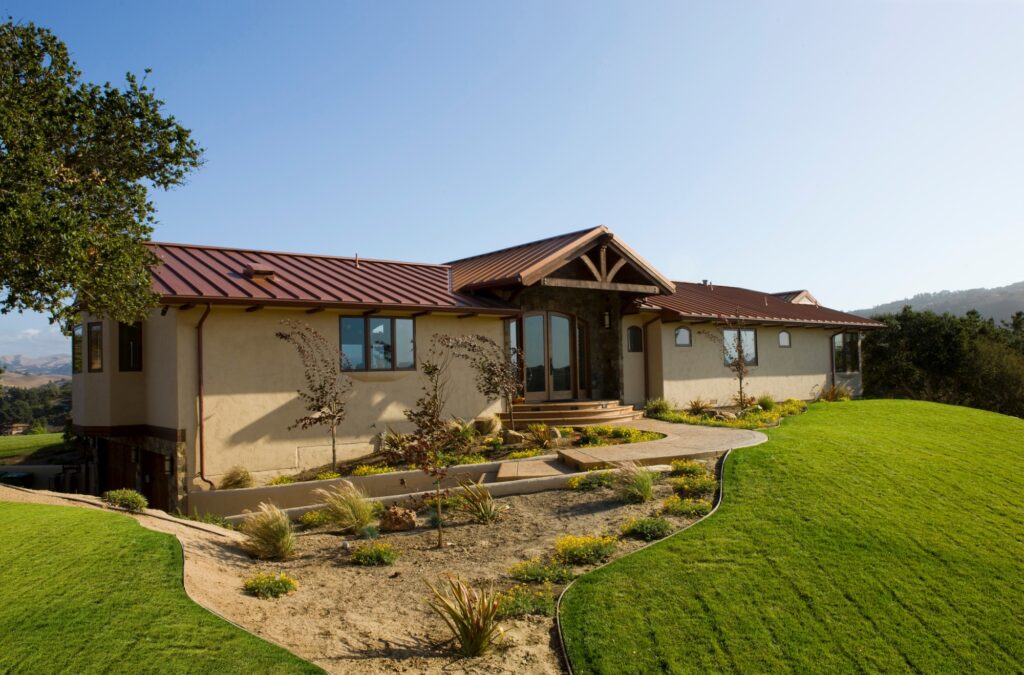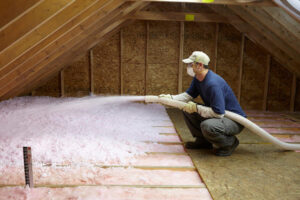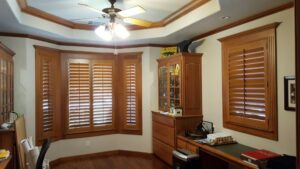
One reliable way to beat the heat is to invest in home improvement measures that lower heat gain and increase energy efficiency. Photo: Scudder Roofing Company ©2020
Here in the Greater San Francisco Bay Area, we don’t often suffer the extreme weather conditions experienced elsewhere in the United States. However, we do see our share of hot and cold weather, and unlike the rest of the country, our homes typically aren’t built to ward off either. Few homes in the Bay Area have central air conditioning, so when hot weather strikes, there isn’t much we can do but sweat it out.
One reliable way to beat the heat is to invest in home improvement measures that lower heat gain and increase energy efficiency. Some measures are more costly and intensive than others, but all of them can make your home more comfortable during hot weather.
Incorporate “cool roofing” measures
Most of the heat gain that occurs in the home results from heat entering through the roof. That’s why the roof is a great place to start when looking at heat-resistant home improvements. There are numerous “cool roofing” products available today, including solar-reflective coatings and shingles. Don’t worry, you don’t have to paint your roof white—you can find solar-reflective shingles that have the appearance of traditional wood shakes. In addition to reducing solar heat gain, cool roofing is a great way to make your home Title 24-compliant.
Fortify your attic
After breaching the roof, heat travels through the attic on its way to the living area of the home. That’s why another important measure to combat heat gain is fortifying the attic by maximizing insulation and sealing the attic floor. Not only do these measures help keep heat in the attic from entering the living space, they also stop conditioned air in the living space from escaping into the attic.

Maximizing attic insulation is an effective way to lower home heat gain. Photo: Atticare Construction ©2020
Sealing an attic floor involves using expansive foams to fill in cracks and gaps around light fixtures, vents, pipes, and electrical wiring. According to Sean Madar of Atticare Construction, prior to being sealed, the air transmission through these gaps commonly adds up to the equivalent of an open 2’x 2’ window. He also points out that the majority of homes in the United States are under-insulated, and replacing old attic insulation with new R-38 insulation usually pays for itself within five years.
Another way to fortify an attic against solar heat gain is to install a radiant barrier. Situated just below the roof, this shiny, foil-like barrier reflects radiant heat from the sun as it attempts to enter the attic. Under the right conditions, a radiant barrier can reduce an attic’s temperature by 20 to 35 degrees Fahrenheit. However, its effectiveness is dependent upon a variety of factors, including climate, roof efficiency and proper installation. Learn more about radiant barriers
Replace your windows
Window technology is constantly improving, so if it has been a decade or more since yours were last replaced, you stand to benefit from upgrading. Consider an energy-efficient combination of double-over-triple-strength Low-E 366 window glass with an argon gas fill and nonconductive spacers. Add an energy-efficient window frame material like wood or vinyl and you’ll have a window that effectively keeps the heat outside where it belongs.
If window replacement is outside of your budget, another option is to fit your windows with solar-reflective film. According to Rocky Burcham, owner of Solar Control Glass Tinting Co., reflective window films are made with metal particles that allow them to naturally deflect sunlight and heat. Another option is ceramic window films, which he says allow for greater visual clarity than metal. “Despite their nonreflective character, ceramic films are still able to reject 99 percent of ultraviolet light, as well as about 50 percent of the sun’s heat.” Window films also improve a home’s heat retention in the winter, so it’s an investment that will pay off year-round.
Upgrade your window coverings

Photo: Magna Shutters ©2020
According to the U.S. Department of Energy, “…when completely closed and lowered on a sunny window, highly reflective blinds can reduce heat gain by around 45 percent.” Upgrading your window coverings is also a good way to improve your home’s aesthetics and even increase its resale value. For example, high-quality wood shutters not only help keep out heat and cold, they’re also considered a value-adding “fixed asset.”
Install a whole house fan
We may have hot days in the Bay Area, but we rarely have hot nights, which is what makes this final measure so effective. Located in the attic, a whole house fan pushes stale, muggy air out of the home while pulling in cooler air from outside. According to Paul Proctor of R E Roofing and Construction, Inc., a whole house fan can drop the temperature inside a home to that of the outside in as little as 20 minutes. “In addition to a relatively inexpensive installation cost, a whole house fan is two to three times less expensive to operate than an air conditioning system,” he adds. For those with limited home improvement budgets, a whole house fan can provide a real breath of fresh air.
To find a company that can help you implement heat-resistant home improvements, visit www.diamondcertified.info.
